
First event of Erasmus+ project, This second day is dedicated to scientific approaches.
For the general public and librarians.
- 09:00 Welcome of public and librarians
- 09:30 Welcome by an elected Official of the town of Saint-Raphael
- 10:00 Conference by Jean-Luc Velay, Researcher for the CNRS in cognitive neurosciences in Marseille : “The Cognitive and Cerebral Changes Induced by Digital Technologies”
- 11:15 Conference by Mr. Christophe Evans, Sociologist : “Contemporean Reading Practices : a sociological look”
- 14:00 Commented projection of the Erasmus+ project panels by its European partners (Actions, culture, the project: What is the Share of Digital in your Cultural Use?)
- 15:00 Conference by Mrs Benhamou, Economist : “The Book in the Digital Era”
- 16:30 Conference by Milad Doueihi, Philosopher : “Why a Digital Humanism”
- 18:00 Offical launching of the Erasmus+ project by Mr.Georges Ginesta, Mayor of Saint-Raphael and the European project partners (Maison du livre of Bruxelles, Lesezentrum Steiermark of Graz, Petru Rares public secondary school of Piatra Neamt,Pelplin high school) and the European representative
- 18:30 Round-table : “What issues for Digital Culture?” 4 conferences. Moderator : Joëlle Baumerder, Director of the Maison du Livre, Bernard Vanmalle, Director of the Association Les Ailes du Vent
- Questions-answers
researcher
sociologist
economist
philosopher
Report
Jean-Luc Velay, researcher in neuro-cognitive science at the CNRS Marseille, is interested in the changes on the brain that induce learning writing and reading on a digital medium. Since the invention of writing in Mesopotamia, successive technical innovations resulted in minor grapho-engine changes. But it is not the same in the era of digital. However, the children build their brain representations of the language written in school. Thus, early and radical changes in learning practices are likely to affect our ways of thinking, and irreversibly. Indeed, we now know that cognition and motor skills are linked. In embodied cognition, what is the impact of digital? Experiments have already been conducted, others are underway to try to assess what changes in our perception and therefore in our understanding. It is an experiment of this type that Professor Velay leads to the Lycée Saint-Exupéry de St Raphaël on students from second.
The cognitive changes and brain induced by new technologies
Jean-Luc Velay is Director of research in neuro physiological and cognitive sciences at the CNRS of the University of Aix-Marseille.
With the advent of the internet, telephones mobile and other digital tablet, the handwriting is, it seems, less and less used by adults. It remains however taught and practiced at school, but for how long again? Early and radical changes in the practice of reading and writing would it be without consequences on the brain representations of the written language that children build at school? Cognitive neuroscience studies which will be presented in this presentation suggest the contrary.
It is a reflection conducted since fifteen years within a team work. Put children in front of a computer at the end of the 1990s has led to ask themselves this question: what is the role of perceptive and cognitive motor skills? Indeed, all our body is equipped with sensors that inform the brain in real time. He uses them to create brain representations. For a long time it has been postulated dichotomy between cognition and motor skills. Today we know that everything is mixed in the nervous system and that there is no cognition without body rooting. We speak of embodied cognition. Thus, our ability to identify objects could depend on the activation of motor areas. However interaction with digital tools minimizes the motive intervention.
Since the beginnings of writing in Mesopotamia, innovations have produced minor graphodriving changes up to the massive use of the keyboard. It spawned a questioning: motor processes of writing came in to play during the visual perception of the letters? Is the component sensori – motor essential in the representation of the letters and their recognition? Different studies conducted with children (before fundamental learning) and young adults (the graphic system users) have resulted in conclusions:
-The Visual-phonological-sensorimotor ensemble works closely connected network. Thus, a visual input reactive across the whole network.
-Motor skills influences memorization therefore recognition of letters.
What beyond the recognition of letters? The decision of some American States to move to a learning to write on keyboard will give us populations to test.
Questioning the impact of digital in the reading fits into the rather tense debate on the introduction of digital services at school. Incarnational reading (reads with his eyes, his hands, and his entire body) is opposed to the immateriality of the electronic text. Do we understand the history of the same way? Are the sense of immersion and emotional commitment the same? Experiments conducted with young adults and dyslexic adults highlights a best reconstruction of the chronology for the readers on the paper: they take paratextual informations (manipulation of the book, the pages turned) enabling them to better find their way in the text space and therefore in time of history.
These issues concern many people and are the subject of an european project, the e-read project. The ‘digital natives’, young people who are permanently in contact with the screen, remain a population to be tested. Indeed, we must not underestimate the cognitive changes that will be generated. We have to ensure the irreversibility of these mutations if we decides to introduce the digital at a time where the brain is immature, that is the moment where you learn the language and the thought. If it is not necessary to reject apriori technologies, we mus not mysticize them.
For the wings of the wind, Albertine Benedetto
Christophe Evans is a specialist in the sociology of reading and uses libraries. He questioned the practices of reading in a world where digital and print formats coexist. Its inquiries cover both on the act of reading and on the figure of the reader. Difficult to carry out because their object investigations: reading is a polymorphic cultural practice, it occupies a propertime, maintains a close relationship with memory, requires a strong investment and takes place in an environment individual or socialized. It involves standards and social representations. In addition, the diversification of possible media: how to evaluate the reading on a smartphone for example?
The comparison between the investigations which took place in 1973 and in 2008 reflects a decrease in the practice of reading. But it also allows to correct a bias: this decrease started long before the Internet. It plays only one role of acceleration.
This disaffection against the book concerned booksellers and libraries. But exclusively digital players remain marginal. Further reading on screen revives very socialized practices such that one could know them at other times for print. It can even result in a share of literary creation: time for a ‘remix’, players slip into the skin of the authors.
Contemporary reading practices: a sociological look
Sociological specialist in the sociology of reading and use of libraries, Christophe Evans is responsible for studies in sociology at the service studies and research of the Public library of information of the Centre Pompidou. He is also a researcher associated to Center Gabriel Naudé (Enssib).
How do we read today in an universe where printed and digital formats coexist together, even are hybridized? What is the image of the book and the figure of the reader in a society characterized by the individualization of morals? Laid milestones are drawn from recent results of both quantitative and qualitative surveys on adults and children and put in to perspective through a sociological and critical reading.
What means ‘to read ‘? “The more polymorphic cultural practices”, according to Jean-Claude Passeron. It is an act that involves three dimensions: technical, comprehensive and reflexive. Literacy, i.e. the ability to understand a text read, is opposed to illiteracy, which today still affects 7% of the adult population. Now talking about digital literacy (made to have a minimum of skills to navigate digital) and illectronism: 42% of adults themselves hampered by digital. The act of reading is immersive, it is a contemplative and introspective activity that takes place in an own temporality, lasting and strong investment. To this subjective activity is added today a fourth dimension, ‘industrial readings’, in the words of Alain Giffard: the reader is itself read by machines and software that he uses to read in digital form.
How to understand the practices of reading? The sociological survey is difficult. First, there is the weight of the book standards. As said J. Goody, we live in societies ” graphics sense”, marked by the culture of the codex and the impact of academic standards making literature an institution.
Then, the bookish reading comes in different social functions, depending on the type of Gérard Mauger: playful (which is not natural but built), educational, healthy (original function) and aesthetics (the most valued by the school and the rarest function).
Finally, there is the part of the utterable and the unspeakable. What about our ability to memorize and to testify? How to evaluate those who under-declare or sur-déclare according to social standards, to the air of the time? How to evaluate activities hybridized between them with brackets that are plural? For example, how investigate reading on smartphone?
Comparing the investigations which took place in 1973 and in 2008, while there are reduction in the practice of reading but the internet is not the gravedigger, it is the accelerator. When analysing the types of readings, one realizes that it is hard to characterize them and specialists are late behind the society.
The survey conducted by Eurobarometer Culture 2013 places France slightly above the european averag. To the question: how many times have you read a book in the last 12 months? On average in Europe, there are 71% of readers in 2007, and 68% in 2013.
Furthermore there is a correlation between BD readers and ebook readers: the reading rate between 1989 and 2011 decreased by 40%, whatever the medium. The most important decommissioning takes place among young people between 15 and 19 years and between 20 and 24 years old. Because the competition remains very strong with digital activities and social networks.
What are the digital reading practices? Anxiety grows in the book sector and gives rise in multiple surveys. It is true that the curve increases rapidly: it has increased from 5% of readers who have read at least a digital book in 2010 to 19 per cent in 2015. But the digital exclusive players remain very marginal (1%).
If we take the example of the press in line, one realizes that it is a nomadic practice, permanently, in a split and full time. Indeed, time has a negative connotation. In addition, fidelity to a title fell considerably and online reader, de‑complexed as a potential political display, selects the plurality of sources. The practice of hypertext obeys a “presumption of information”: the reader clicks the link hoping to find more information but this practice often comes to blur its reading. In front of this, the “digital natives” who are comfortable in digital are not necessarily relevant.
Reading has always been a very socialized practice. Digital technology allows to generalize the forms of social reading, it becomes a connected reading that we share with the networks. In contrast this is not the form most developed. On the other hand, the connected player becomes more frequent through blogs, sites, “booktubers”. For example, one realizes that boys talk more willingly of their readings online.
Digital technology allows a practice of creative writing: the « cultural remix ». The reader wishes to intervene on the text, taking the place of the author. The “fan fictions” and recommendation and cultural transmission channels are then horizontal more than vertical. Thus, connected players participate in the work of creating the literary value.
How to explain the decline of engagement in the practice of reading books?
-through a process of individualization of manners: the social pressure on legitimate cultural activities decreased
-by a decrease of intensity in the artistic and literary faith, what Bernard Lahire calls « cultural relaxation ».
-by competition with other media, even if young people more easily place their trust in the books than in the media.
For the wings of the wind, Albertine Benedetto
Françoise Benhamou is Economist, Member of the circle of economists and the ARCEP (regulatory authority for electronic communications and posts). She recalled the fundamentals of the digital economy. It comes to platforms with two-sided markets: it sells to users and users data are used to sell on the advertising market. F. Benhamou highlights disruption phenomena that characterize the digital: traditional chains are avoided. Therefore, rethinking taxation, property, the legislative regulation. It relies on the comparison with the sector of the disk and the press to draw lessons from the new models that have emerged. It is assumed that in the book sector, it goes to a reversed order of the present order: the edition should first be numeric and then give rise to a print on demand. Where many changes in the book trades which leave the field open for innovation.
The book in the digital age
Economist, Françoise Benhamou is University Professor and Vice-President of the University of Paris XIII. She is a member of the circle of economists and ARCEP (regulation of electronic communications and postal authority).
Four introductory remarks:
(1) a change is inevitable from the point of view of use but also unpredictable because it is often wrong to make assumptions from the photography of a given moment. It must be remembered that the behaviour of the early users are never those of the mass.
(2) the fundamentals of digital:
The first arrived takes largest market shares and expansions seems to not be limited. It’s an economy of platforms with two-sided markets: one sell to users and uses users’s data to sell them on the advertising market. One therefore exploits personal data. The feature of this type of economy is in phenomena of disruption: we jump links in the traditional channels, we do without intermediaries. Moreover, the non-localization of the activities causes problems of taxation.
(3) what is an eBook?
This is a file that can be read on a computer, but also a download service (which applies a 20% VAT). Finally, it is a work.
(4) hypothesis:
For reasons of economic rationality, but not only, it goes to a reversed order of the edition which will first be digital with a print on demand. What causes a change in the librarian profession.
How can we learn of what happened in the music and press areas?
Models as well as new uses are varied. One can speak of economies of trial and error. Digital technology is not a by-product of the physical world: If they want to monetize they cannot offer the same thing. Thus, there are more readers on internet but less value is created.
They have made errors in the music field about piracy: sanction unilaterally does not allow to tackle the mafia sites.
The mutation of traditional publishers
They have under-estimated the true contribution of digital technology. They must continue their traditional model with its costs and at the same time convert their novelties and retroconvert their funds. They therefore enter in the digital technology with a craft way and hinder their development. So much more than the distribution of physical books is very profitable.
The France is a market of booksellers: migration to digital raises the question of the survival of libraries. Regulatory and legislative devices are modeled on the paper book.
The giants of the Internet: a gigantic market with very different strategies
Amazon is a locked model, we remain in the universe marketing with a desire to be present everywhere. It is a market place and it is present in the ‘cloud ‘.
On the other hand, Google is an interoperable universe and has a library logic. If we take the issue of the Universal Library, we realize that it was to make the engine of search even more relevant.
The question of innovation
There is a lot of innovation but editors do not have a culture of research and development.
The scientific book migrates to digital. In the area of the beautiful book, a link is created with artists and their works. In the field of education, the enriched book represents a new market. But it is a question of derived additional markets, of the order of experimentation. It represents a still very young economy, a burgeoning industry that bets on enriched book.
Uses and their monetization
Internet readers tend to subscribe to collections or buy by part or chapter. Unlimited subscription demand is rising but the editor remains suspicious because it makes little money. The concept of property is no longer relevant.
Amazon has a prescription strength: it is a tool which allows to descend in the editorial fund. Indeed, we hardly discover new books, there are an infinite number of titles. What is known becomes even more known, but thanks to the community of online readers we are witnessing a rise in small prints. Also book clubs develop and allow an opening. Will digital offer a way to exist to the confidential or specialized authors? The self-publishing is a massive phenomenon. In the United States there are more titles in auto edition than in traditional publishing and Amazon has rushed in to the market.
What happens to the authors?
Their work is different, they ask themselves the question of remuneration: the prices come down with digital technology (30% less). On some platforms, authors are paid more and this led to discrepancies between author and publisher. So there are so many tensions on copyright which is to rethink (its duration, exceptions). ‘open access’ is a topical issue in particular relating to the results of research financed with public funds.
In conclusion: what become booksellers in the digital world?
They have a function to play with the need of socialization: creating spaces of conviviality, allowing physical exchange between author and reader.
They can set up their tables in a different way presenting no longer novelties but rare or unavailable books.
They can benefit from more freedom in the constitution of their funds.
We must think that digital technology always creates its antidote.
For the wings of the wind, Albertine Benedetto
Milad Doueihi is a philosopher and historian of religion in the modern West. He holds the Chair of digital humanism at the University of Paris-Sorbonne. On the three great ages of humanism by Claude Lévi-Strauss, he adds a fourth: digital humanism. Indeed, digital has fundamentally altered our relationship to time and space: the way of thinking of the Humanities inherited from the Renaissance and the enlightenment is being fix in an era of widespread measurability. Thus, we know a time of change: after living on the model of the index, this modality moves today to the paradigm of the recommendation. Because there is a continuum between our personal data and trace we leave. We must therefore ask how to handle this traceability. The stakes are economic, political, ethical. The human mind is becoming calculable and the notion of computability between all areas. This is why the concept of interface between man and machine is larger than screen. The interface today is the report to what is digital or scannable. This raises the question of memory and oblivion, oblivion is constitutive of the human being, for digital if the unthinkable. The myth of the Golem helps us think this interface: should we talk about fall of the human, of loss of dominance on the technique? Think of free will in a changing landscape complete? Therefore, imagine an ethic that is appropriate to all that the digital world makes it possible.
Why a digital humanism?
Digital mutation is it a simple technical progress or are we attending the first steps of a new era which puts in place a new economy of memory? Philosopher and historian of religion in the modern West Milad Doueihi is chair holder of digital humanism at the University of Paris-Sorbonne (Paris IV). Milad Doueihi has been interested in recent years in the evolution of society with and by digital technology.
Whence the notion of digital humanism?
Digital technolgy has changed our relationship to time and space.
1 – By the presence of his body in space, the human being is an architect. We can refer to the work of Marcel Mauss appeared in the 1930s. This one indeed has postulated a link between the state of the technique and the status of the body in a civilization. Comparing China and India for example, we will see on the one hand a culture of the chair, and on the other hand a culture without chair, and by consequence a different statute of the body. Digital culture that is first and foremost a sitting culture is becoming purely mobile.
2 – The role of techniques beyond printing. Claude Lévi-Strauss distinguished three great ages of humanism:
– the Renaissance, aristocratic humanism, which saw the birth of the critical method
– the bourgeois humanism of the XIX th century, where the discovery of distant civilizations leads to the comparative method
– Democratic humanism in the XXth century, which took into account the oral tradition and myth. According to J. Goody, we are witnessing « the domestication of the wild thought ».
We can today release a fourth humanism. In point of fact, in an era of widespread measurability, the way of thinking of the Humanities is put in difficulty.
Three examples:
– 1950: Alan Turing wrote Computing machinery intelligence. Here, the word ‘intelligence’ appears only in the title: the machine can not access to the intelligence. At this time the transmission of learning is essential. Digital sociability is the culmination of the first way of thinking computers.
– 1962: Norbert Wiener, father of Cybernetics, declares that « living effectively is living with adequate information ». What is today the concept of adequacy?
– 1999: John Von Neumann, in The computer and the brain, undertakes a comparison of similarities and differences in order to understand the specificity of the cerebral living machine. The computer machine is built in the image of the human.
So we know a time of change:
While we lived on the model of the index, this modality moves today to the paradigm of the recommendation.
How is this modality it constructed?
– by the modality of the semantic neighborhood
– by taking account of the attendance of our social network
– the forecasting model moves towards the implied limitation
There is a continuum between our personal data and trace we leave. We must therefore ask how to handle this traceability. The stakes are economic, political, ethical.
The human mind is becoming calculable and the notion of computability enters in all fields. However this gluttony of data maintains a fundamental relationship with the heritage. Indeed, in the digital world can survive only what one chooses to make it survive. This is the problem that arises for example in the digitization of libraries.
The concept of interface between man and machine is more important than the one of screen. The interface today is the report to what is digital or scannable. This raises the question of memory and oblivion, oblivion is constitutive of the human being, for digital technolgy this represents the unthinkable. We must therefore avoid confusing the two types of memory, the one of the man, the one of the machine.
To think the interface between man and machine, one of the first challenge is to distinguish three categories:
– the computational reason, which is how to formulate a question for the computer can give us a reply
– algorithmic thinking, which is a provisional validation, algorithm is powerful because it needs lots of data to feed on
– algorithmic governance: the algorithm shapes human because it impoverishes some choices, encourages others.
All these elements are cultural, political, economic.
The myth of the Golem helps us thinking this interface: should we talk about fall of the human, of loss of dominance on the technique? How to think the independence in an era of growing empowerment with respect to the status of these human beings cultural that are robots? Autonomy is affirmed by a mode of delegation: what kind of delegation regard to these forms of empowerment claiming autonomy? What might be the legal status of virtual beings?
Conclusion
One can mention the debate with the transhumanist schools who think that machine intelligence will exceed human and who seek to join the two, for example by offering to download the human brain.
How to think of free will in a complete changing landscape? The legacy of the Enlightenment is put to the test by the ethical and technical dimension at a time. The dissociation between two modalities of ethics according to Max Weber (cf. The scientist and the policy) no longer resists because of the the nature of computer code. It changes the social link itself. Therefore, we have to imagine an ethic that is appropriate to all that the digital world makes possible.
For the wings of the wind, Albertine Benedetto
The round table
6.30 pm round table brought together four speakers of the day: Jean-Luc Velay, Christopher Evans, Florence Benhamou and Milad Doueihi. Bernard Vanmalle was the moderator. It recalled the issues of the day: multiply the points of view, crossing the different lightings for provoking and take the measure of the evolution of society in which we participate.
It is this term of evolution that has opened the debate. Should we talk about evolution or revolution? For Françoise Benhamou, it is indeed a cognitive revolution because the way we build and share our knowledge has changed totally. Christophe Evans qualified the remarks by recalling that there are permanences or even recurrences of uses: are we not in a comeback of the bicycle in our cities? What must be pointed out, more than innovation, it is the disruptive nature of our practices in the digital time. Milad Douheihi offers the word ‘conversion’, in the sense where our society follows the numerical model format converter. Jean-Luc Velay underlines meanwhile the brutal nature of the rupture: the digital tools are no longer simple tools, from the moment where their use changes our way of thinking. It is well a revolution since the return to the previous state is not an option.
For Bernard Vanmalle, every revolution carries with it both destruction and creation which explains a double state of mind: the anguish of some and their desire to stop this society which goes forward, enthusiasm, for others, in front of the discovered potential. F. Benhamou compares the phenomenon to the transport revolution by showing that it goes further, because digital technology carries information and irrigates all exchanges and ways of thinking, where the feeling of anxiety or enthusiasm evoked because it is dealing with something fundamental. Mr. Douheihi adds on the radical nature of the break: there’s no equivalent in our history.
A question came from the public the debate towards energy dependency: how can we think the digital revolution independently of this problematics? J.L. Velay develops this point highlighting the strong dependence of computing to energy and to materiality. Indeed, the tools have a very rapid obsolescence. In addition, this can only reinforce social inequalities.
And what about control? A listener mentions the political problem: in so far as United-States hold a strong power in the digital sector, what would happen if America became a dictatorship? Mr. Doueihi underlines the fact that it is western questions and that there is a lot of uncertainties: on the scale of major players in the digital development, on the mapping even of power distribution. Chinese and Russian actors are indeed very powerful but India represents a great unknown.
Can we still make choices, is there place for freedom? request Joëlle Baumerder, Director of the House of the book in Brussels. Mr. Doueihi is formal: we can not control the issue of traceability. But we can master it in our personal uses. Indeed, the digital world is very rich, the user can make choices and do not always go on the side of the facility. We can equip ourselves to prefer free software rather than pay. Since the open tools, according to his expression, allow to have better control over our personal data. Thus, F. Benhamou entrusts work with an agenda paper and use a pencil and an eraser instead of the Google calendar! J. L. Velay emphasizes the possibility of choice. To have the choice of the books, of the support, on the way to write. Thus, caution should be exercised: systematize the learning to write with the keyboard risks of losing this opportunity. Moreover, in Silicon Valley, the upmarket school children have their fundamental learning outside the digital. The argument put forward is independence from the tools, which must remain tools, still reminds M.Velay
An auditor is concerned for the France: what is the future of classes and libraries? F. Benhamou evokes MOOCS (online courses). This is still a tool that does not replace the personal relationship with a teacher. C. Evans confirms this idea by mentioning the MOOCS survey results that are sometimes very mixed: If there are many inscriptions at the beginning of course, there is a strong loss over time. One then feels the need for a human mediation. In addition, Mr. Evans recalled that we can implement forms of resistance around the notion of common property. Each in his professional environment, whether teacher or librarian can help institutions to evolve and to ensure that they help us to adress the issues. For example, before you let somenody create a Gmail box, would it warn of what this means in terms of traceability?
A new question of the meeting room is on the potential changes in the physique of young people. For J.L. Velay there is not a real threat because physical activity should be really very reduced to really impact the physics. For F. Benhamou crucial change concerns the relation-ship to space and the perception of the city. The massive use of GPS for example changes our spatial representation. For J.L. Velay, this cognitive change represents a regression: we have returned to the time of the coasting trade, without comprehensive representation of the territory. However, we must qualify the remarks: on the other hand, digital technology represents progress for people in difficulty in front of the written thing. Writing to the keyboard for example is easier for the dyslexics. Or again, the lights to read with a font suitable for aging eyes.
But how to warn future generations of the potential dangers of digital? asked a listener, struggling with his own children. Mr. Doueihi asked to trust homo numericus relying on this statement: those who are most engaged in the digital world are also more vigilant on its derivatives. C. Evans also recommends the passage by the experience. Thus takes place a self-regulation.
Then we approch the idea of a new sharing economy: is it rather in relation to the libertarians ideals, asked B. Vanmalle, or capitalism? Ms. Benhamou cautioned against the illusion and the idealization of the cloud: far from being a nice cloud, it is primarily a reserve big hard data owned by super groups. There is certainly an ideal of sharing and freedom for some users the digital but do not forget that the majority uses sharing to make profit.
The last questions relate to languages, other than English: have they a future? Mr. Doueihi is formal, the local will come back with force. J.L. Velay evokes the difficulties of Chinese who unlearn their written language by dint of using digital tools.
But it is time to conclude because the subject evokes questions without end. A last listener emphasizes the idea of vertigo in a modified time and perpetual evolving. As said F. Benhamou, digital overwrites space and time. C. Evans calls for a collective reflection and cites the sociologist and philosopher Hartmut Rosa: we can implement some pockets of slowdown but we won’t slow down. Therefore, we have to learn to live with.
For the wings of the wind, Albertine Benedetto
Conception
- Association Les Ailes du vent and City of Saint-Raphaël.
Partners
- Ville et Médiathèque de Saint-Raphaël (FRA)
- Association « Mémoire à lire, territoire à l’écoute » (FRA)
- Confluences & Europe (FRA)
- Colegiul National Petru Rares (Piatra Neamt/ROU)
- Lesezentrum Steiermark (Graz/AUT)
- La Maison du Livre (Bruxelles/BEL)
- Zespol Szkol Ponadgimnazjalnych (Pelplin/POK)
- Lycée Professionnel Golf Hôtel (Hyères/FRA)
- Lycée Saint-Exupéry (Saint-Raphaël/FRA)
© Jean Belvisi photography / 2015
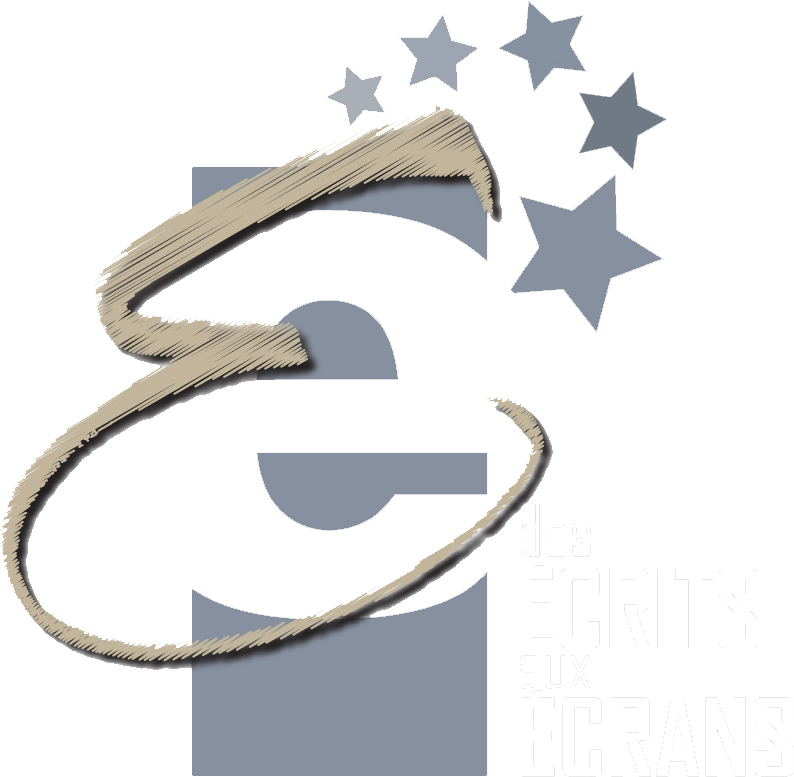


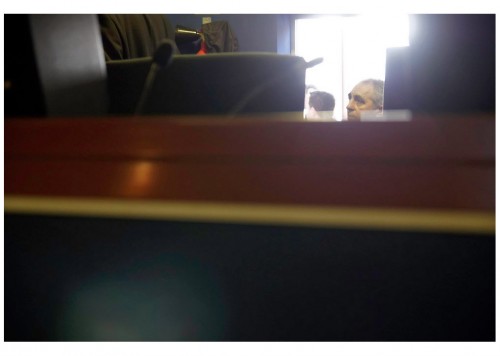

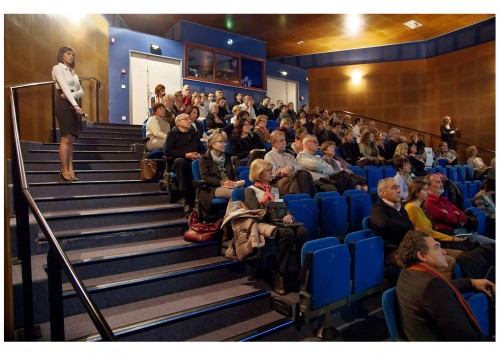
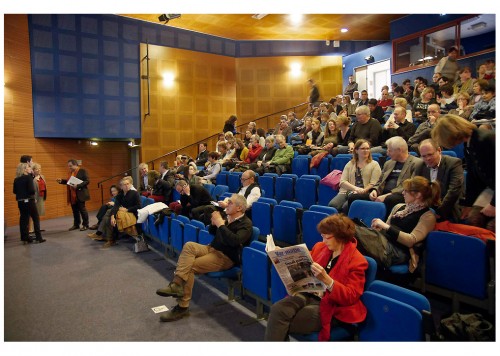
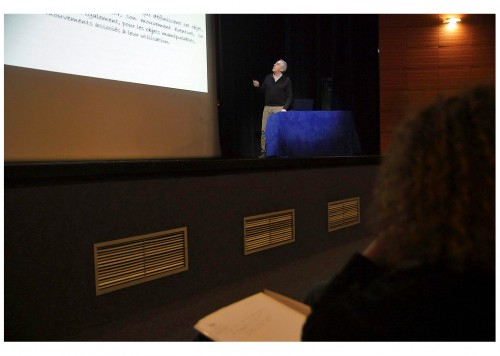



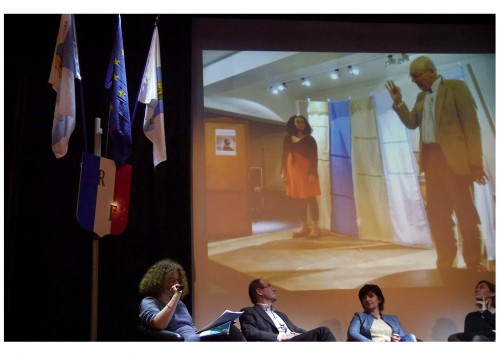


![EU flag-Erasmus+_vect_POS [RGB]](https://www.scriptanumerica.eu/wp-content/uploads/2014/11/EU-flag-Erasmus-_vect_POS-RGB.png)